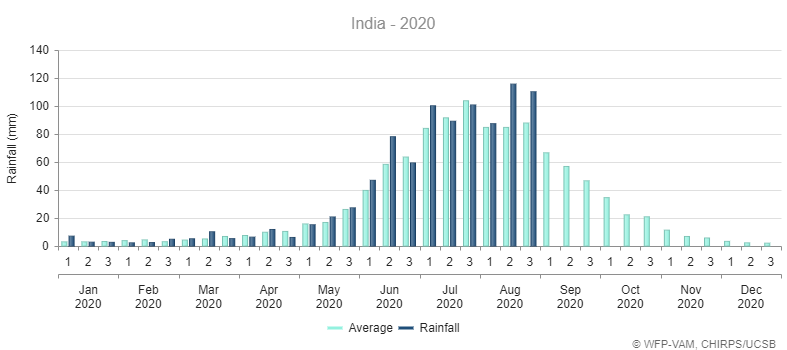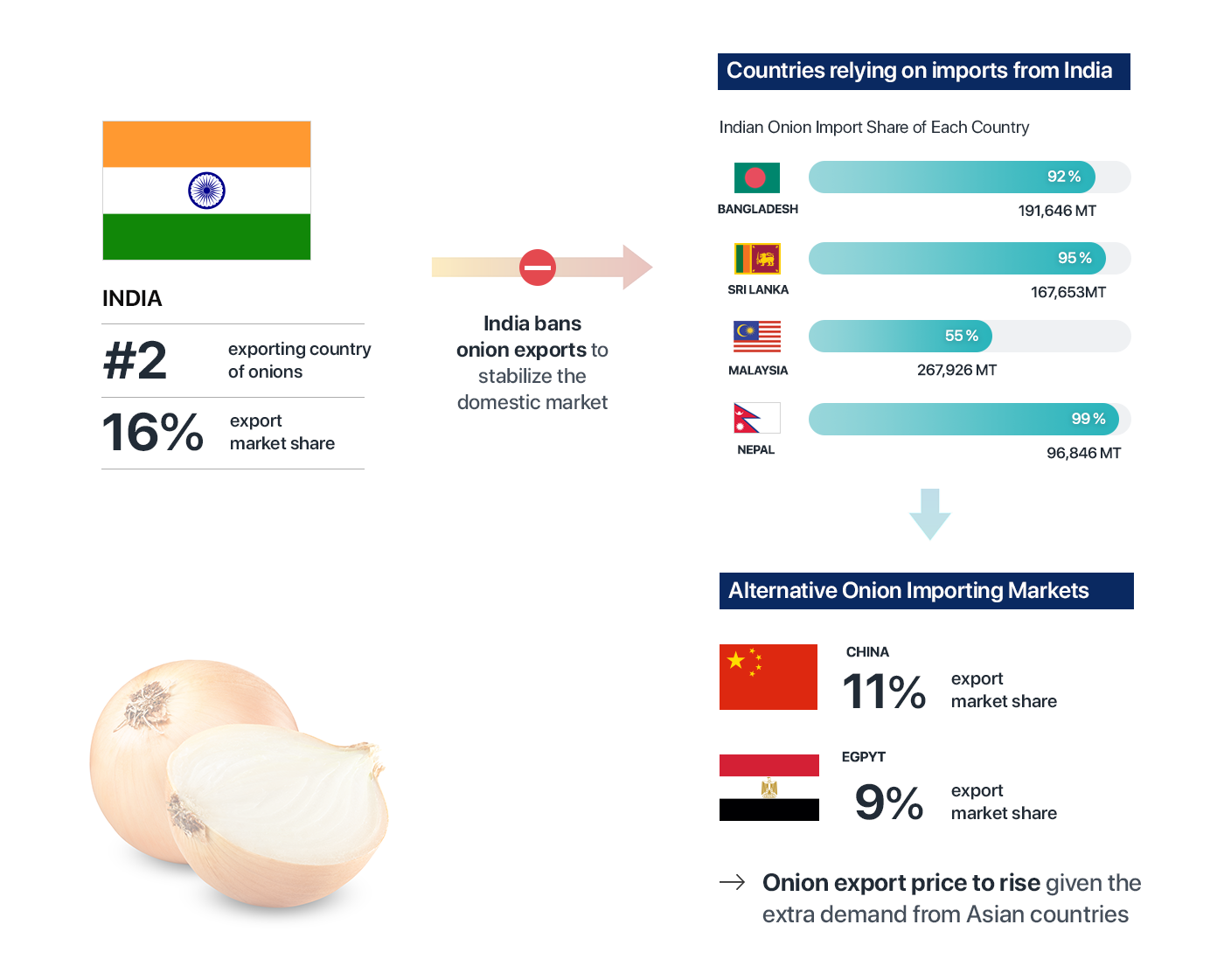India Bans Onion Exports as the Wholesale Price Triples
An export ban on onions in immediate effect
On September 15, India prohibited exports of onion in a movement to protect its domestic market amidst supply shortages and skyrocketing prices after excessive rainfall hit the country’s primary crop in the southern states. With the exception of cut, sliced, or powdered form onions, the ban included all varieties of onions produced in India and was put into immediate effect.

Amendment in export policy of onions.Source: Government of India
Price in an upward trend since April due to COVID-19
Prices at the market of India’s largest onion trading hub, Lasalgaon, a town located in the western state of Maharashtra, has risen gradually since early April due to increased global stockpiling demand amidst COVID-19. India exported $198 million of onions during the April-June period of FY21 while recording $440 million during the entire 2019-20 season.

Rainfall in India. Source: World Food Programme, United Nations
...But recent heavy rain triples the onion wholesale price
However, the recent dramatic appreciation of prices is mainly due to heavy rainfall that took place in the southern Indian region, which destroyed onion crops that were supposed to hit the market in early September. The early-Kharif onion crop in Andhra Pradesh and Karnataka, which is usually supplied across the country at this period, has been badly damaged due to flooding in farmlands from incessant rains. As a result, the wholesale price in Lasalgaon since August has trebled from 0.1 USD/kg to almost 0.3 USD/kg, leaving the government no choice but to close the exporting gate to stabilize its domestic market.

Wholesale price trend of onions in Lasalgaon, India. Source: Tridge
Global price volatility to exacerbate, especially for the Asian market
The ban is expected to trigger a global supply shortage for onions and drive the crop price to rise given India’s dominant position in the worldwide market; India is one of the world’s biggest exporter of onions and accounts for 16% of the total global exports, following the Netherlands with 18%. In particular, Asian countries that rely heavily on onion imports from India - Bangladesh(92%), Nepal(99%), Malaysia(55%), and Sri Lanka(95%) - are likely to be primarily affected. Short shipment times have played a crucial role in preserving the taste of the perishable commodity for their go-to local dishes, but now they must eye on sourcing from India’s rival exporters such as China and Egypt. Should the Asian countries choose to source from these alternative suppliers, the exporters are likely to take advantage of the Indian ban to raise their asking price, hence the upward pressure on the export price.

The previous ban was in effect until new crops arrived
A similar situation was spotted in October 2019, when India had banned all onion exports after local prices jumped to 4,500 rupees (US$63.30) per 100kg, their highest in nearly six years, due to the delay in summer-sown crop arrivals triggered by more prolonged, heavier rains than usual. Countries such as Bangladesh have turned to suppliers such as China and Egypt to make up for the loss and reduce prices, but the hefty volumes lost were hard to replace, and the import price doubled as suppliers took advantage of the Indian ban. The Indian ban was lifted on March 15, 2020, as its domestic market stabilized and allowed its farmers to receive better prices for their rabi onions, which arrived in the market in considerable quantities that month.
It remains to be seen how long the ban will stay this time, but onion-reliant importers seem to have entered a 'Supplier’s Market' with less negotiation power at least until November when the new crop is expected in India.
Sources
- The Weather Channel,Southern India to End April on Wet Note; Heavy Rainfall Expected over Several States
- The Indian Express,As onion prices rise, govt bans export with immediate effect
- The Print,Onion prices could touch Rs 100/kg by Oct as heavy rain damaged early-kharif crop, rabi stock
- The Economic Times,India bans export of all varieties of onion





